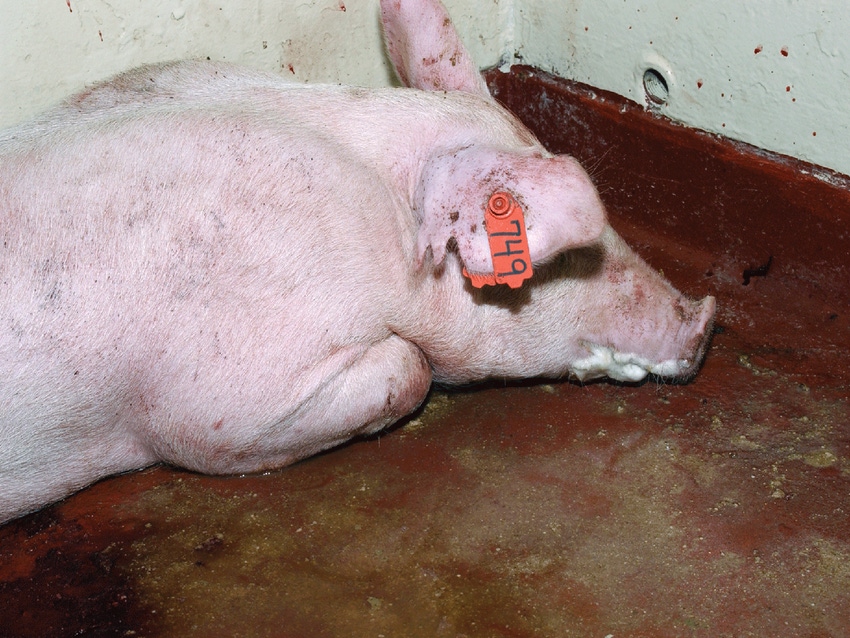Sharing practical ASF knowledge through global connections
During Vets to Vets, participants discussed how veterinarians, pork producers can maintain production in the face of African swine fever.
February 28, 2024

By Rachel Schambow, University of Minnesota
The continued global spread of African swine fever in 2023 and 2024 highlights its enduring relevance as a serious foreign animal disease threat to the U.S. swine industry. ASF is a hemorrhagic viral disease of swine that causes up to 100% mortality in affected herds, and for which there is no treatment or widely available and approved vaccine.
In the past year, Greece, South Korea, Italy, Sweden, Bangladesh, and more experienced the first introduction, reemergence, or spread of ASF into new regions1. To date, ASF is present in Europe, Asia, Africa and the Dominican Republic and Haiti. Since 2007, no countries have eradicated ASF after it has reached their domestic pig population, and many struggle with the disease after its initial introduction.
The ASF virus does not infect humans and is not a food safety concern, but its effects on pigs, food systems, and global trade are severe. The World Organization for Animal Health reports that as of January 2021, over 1.8 million domestic pigs have been lost to death or culling because of ASF2.
An ASF outbreak in the U.S. would immediately close export markets, which would be devastating to the U.S. swine industry. If exports were halted for two years, experts estimated it could cost over $15 billion USD3 in control efforts and lost markets. If halted for 10 years, that figure could reach $50 billion.
Preparing for ASF in advance is the best way U.S. swine producers can prevent an outbreak on their farm or mitigate the impact if one does occur. Currently, producers and veterinarians have access to an abundance of general ASF knowledge and guidance online. However, it can be difficult to understand how to practically implement this information on swine farms and to know what actually works in the field.
This is where connecting with the global community of veterinarians and producers battling ASF can be highly beneficial for the U.S. swine industry. Through their firsthand experience, veterinarians in ASF-affected countries have learned many important lessons on effective and practical ways to prevent and control ASF. However, this information does not always reach U.S. swine veterinarians or producers because it may be too sensitive to share publicly, is too recently developed, or is not easily accessible.
To help overcome these barriers and strengthen the U.S. swine industry’s ASF preparedness, the University of Minnesota Center for Animal Health and Food Safety hosted the first Vets to Vets workshop in September 2023. CAHFS used their global partnerships to bring six veterinarians from three ASF-affected countries together with 10 U.S. swine veterinarians. For over three hours, the participants discussed how veterinarians and producers maintain swine production in the face of ASF. Topics varied from farm and truck biosecurity, feed management, carcass disposal, disinfection, surveillance, diagnostics, traceability and more.
Many important lessons and messages were discussed during the workshop. According to the international veterinarians, one of the most important factors to successful ASF control is a speedy response and having a management structure in place prior to an outbreak. They shared many examples of the biosecurity protocols they use on their farms, including pig movement, personnel and truck management, feed and more.
Overall, they emphasized the comprehensive and consistent approach needed to keep ASF out when in an endemic situation. They also shared their approaches to ASF surveillance and early detection, emphasizing the need for daily observation protocols and identification of early, nonspecific signs such as fever or being off-feed. For the full summary of lessons learned at V2V, please visit the website.
If you want to learn more about future V2V and swine foreign animal disease educational opportunities, please consider completing CAHFS’s interest form or by contacting CAHFS researcher and veterinarian, Rachel Schambow, at [email protected]. You can also submit ideas and topics you would like to learn more about. The CAHFS team hopes to keep providing U.S. swine veterinarians with exciting, engaging and valuable educational opportunities in the future.
References
Swine Health Information Center. Swine Disease Global Surveillance Project January 2024 Report. Accessed Jan. 25, 2024.
World Organization for Animal Health. African Swine Fever Situation Report 43. Accessed Jan. 25, 2024.
Carriquiry, M., Elobeid, A., Swenson, D., and Hayes, D. (2020). “National and Iowa Impacts of African Swine Fever in the United States.”
You May Also Like



